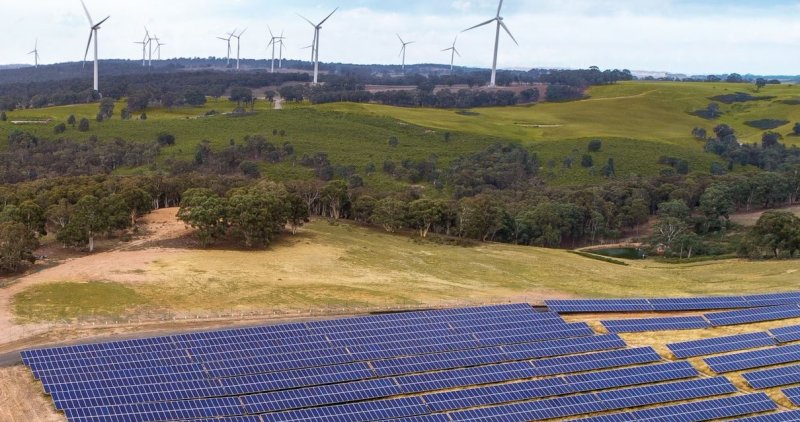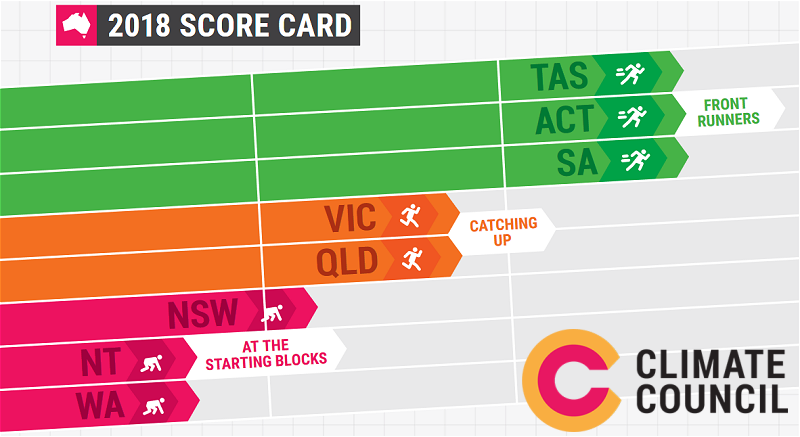
Image: NSW Energy
New South Wales’ Minister for Energy and Utilities Don Harwin outlined renewable energy progress in the state at the NSW Smart Energy Summit on Tuesday.
The state was graded a C on the Climate Council’s 2018 Renewable Energy Scorecard, but Minister Harwin may disagree with that assessment judging by his comments at the Summit, which was hosted by the Smart Energy Council.
“In 2013, we set 24 ambitious targets to increase renewable energy generation in NSW and we are proud to announce today that all of them have been realised, helping ensure we have sufficient and affordable supply as we transition to a renewable energy future,” he stated.
Those 24 actions can be viewed here.
18,500 MW In NSW Planning System
While progress may not be as fast as some would like, things are moving along in New South Wales. In 2013, there were no large scale solar farms in the state1 and Minister Harwin says today there are nine solar farms operating, plus eleven wind farms.
The Minister says 90 large-scale renewable energy projects are in the NSW planning system, representing 18.5 gigawatts of capacity and close to $26 billion in potential investment. He said if all those projects were to come to fruition, that level of capacity could generate enough energy to supply equivalent to the electricity needs of all New South Wales households.
Other initiatives were mentioned, such as the rollout of solar panels on the rooftops of government buildings. The significant investment in solar power made by New South Wales households was also given a hat-tip in a round-about sort of way.
“One in six NSW households and small businesses are accessing the benefits of rooftop solar and many more are expected to follow, as system costs continue to fall,” he stated.
About That “C” Grade
So with all this renewable energy goodness going on in the state, why did NSW get a “C” on the Climate Council’s latest scorecard, which was published in October?
The Climate Council says (PDF):
“New South Wales has limited policies to encourage renewable energy, despite having Australia’s oldest fleet of coal power stations.”
The report points to the fact New South Wales does not have a renewable energy target – but it does have a target of net zero emissions by 2050. The renewable energy percentage in NSW noted was based on 2017 figures,12.6% – which was a drop from 17.5% in 2016.
It will be interesting to see if the impact from all the progress the Minister outlined is enough to push the state past the “starting blocks” in next year’s scorecard under the current government – but first the Berejiklian Government has to get to that point.
State Election Looms
More important for the Government at this point in its tenure is whether its efforts and future plans will impress voters. The next New South Wales state election is scheduled to be held on Saturday 23 March 2019; so it’s really not all that far off.
The Clean Energy Council recently stated the recent Victorian election result should act as a warning to all parties that NSW voters expect a strong clean energy policy, and without it any momentum in new renewable energy investment is likely to stall.
The CEC helpfully provided a list of policy recommendations Minister Harwin et. al. may want to take a squiz at.
Update: Further discussion of the Minister’s speech and the situation in New South Wales can be viewed on the Smart Energy Council website and RenewEconomy.
Footnotes
- Back in 2013, there weren’t many large-scale solar farms anywhere in Australia. ↩


 RSS - Posts
RSS - Posts



Liddell is due to close in 2022 (less than 4 years away), representing a loss of 8 TWh of output (net loss say of 7 TWh allowing for Bayswater 100 MW upgrade).
Vales Point B power station will be 50 years old in 2028 (less than 10 years away).
Eraring’s closure date is 2032.
So NSW is losing 7 TWh of coal generation in the next 4 years but so far only has less than 5 TWh of new investment. So that means more imports.
See: https://reneweconomy.com.au/nsw-is-on-cusp-of-energy-crisis-yet-no-one-seems-to-care-93962/
I don’t think the NSW Government is doing enough to avoid an electricity supply crisis.
Where’s the ‘dispatchable’ energy generation coming from to fill the gaps when Liddell, Vales Point B, Eraring, Bayswater and Mt Piper retire?